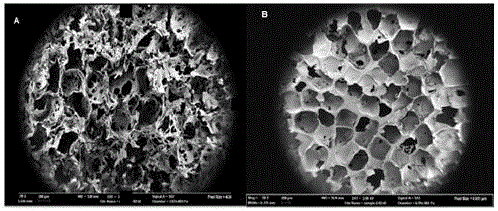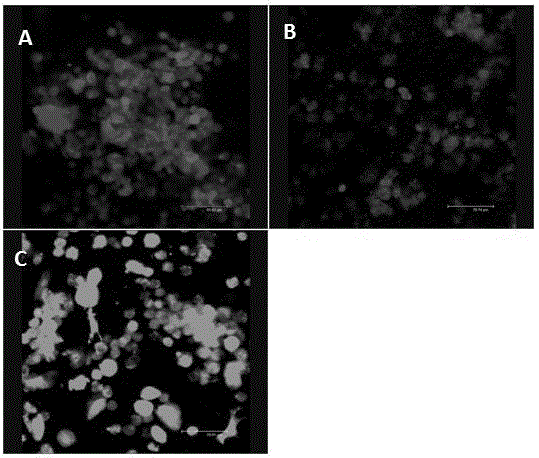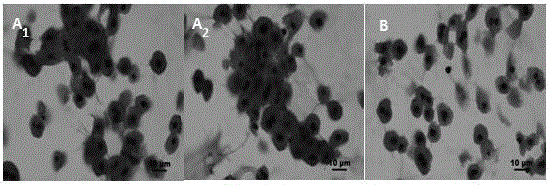Culturing method for improving in-vitro differentiation phenotype and function of hepatic cells
A culture method and in vitro culture technology, applied in the direction of cell culture supports/coatings, hepatocytes, artificial cell constructs, etc., can solve problems such as the reduction of enzyme function activity, and achieve the effect of improving material transfer
- Summary
- Abstract
- Description
- Claims
- Application Information
AI Technical Summary
Problems solved by technology
Method used
Image
Examples
Embodiment Construction
[0018] The specific implementation manner of the present invention will be described below with reference to the accompanying drawings. Such as Figure 1 to Figure 7 Shown:
[0019] Preparation of porous silk protein scaffold:
[0020] First prepare a silk fibroin solution with a concentration of 6-7%, and prepare a porous silk fibroin scaffold by salting out-drying method, control the pore diameter of the scaffold to 500-600 μm by the size of the salt particles, fully soak in deionized water after drying, and then A three-dimensional scaffold (ie porous silk protein scaffold) with a diameter of 5 mm and a thickness of 3 mm was prepared using a standard puncher. The porous silk protein scaffold needs to be sterilized by high temperature and high pressure before inoculating cells, and soaked in the culture medium for pre-equilibration for 12 hours.
[0021] Isolation and culture of primary rat hepatocytes:
[0022] After rats were anesthetized, two-step perfusion with colla...
PUM
| Property | Measurement | Unit |
|---|---|---|
| Diameter | aaaaa | aaaaa |
Abstract
Description
Claims
Application Information
 Login to View More
Login to View More - R&D
- Intellectual Property
- Life Sciences
- Materials
- Tech Scout
- Unparalleled Data Quality
- Higher Quality Content
- 60% Fewer Hallucinations
Browse by: Latest US Patents, China's latest patents, Technical Efficacy Thesaurus, Application Domain, Technology Topic, Popular Technical Reports.
© 2025 PatSnap. All rights reserved.Legal|Privacy policy|Modern Slavery Act Transparency Statement|Sitemap|About US| Contact US: help@patsnap.com



